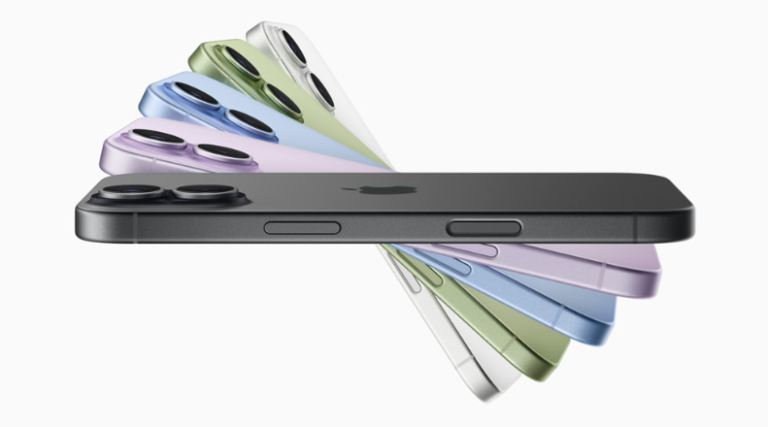
On September 17, 2025, in Menlo Park, California, Meta unveiled its latest generation of smart-glasses at the company’s annual Meta Connect conference.
The lineup included the flagship Ray-Ban Display (about $799), the mid-range Ray-Ban Meta Gen 2, and the sport-oriented Oakley Meta Vanguard.
This launch was supposed to mark a major leap for Meta in wearable augmented-reality and AI eyewear.
Instead, a series of on-stage glitches turned the event into a social-media spectacle and sparked widespread debate:
Was the technology under-prepared?
Were consumer expectations set too high?
Have privacy and trust issues been ignored?
And can these products realistically reach a mass market?
Let’s take a closer look.

Product and Features: Meta’s Technical Ambitions
Before the keynote, Meta repeatedly hinted that this generation of smart glasses would be the “next step”—going far beyond simple photo capture or notifications.
The company promised visual displays, real-time AI assistance, a neural wristband controller, and better performance outdoors and during sports.
Three Models, Three Targets
- Ray-Ban Display – $799 flagship with a heads-up display embedded directly in the lenses. Notifications, navigation prompts, and AI answers appear right in the wearer’s field of view. It pairs with a neural wristband that interprets muscle signals for gesture control.
- Ray-Ban Meta Gen 2 – about $379, focusing on camera and battery upgrades.
- Oakley Meta Vanguard – around $499, designed for sports, with improved water- and dust-resistance plus advanced fitness tracking.
Key Capabilities
- Real-time translation and live captions for cross-language conversations.
- Meta AI assistant with “Live AI” mode, always ready to analyze surroundings and give step-by-step help—like a cooking demo that can “see ingredients” and suggest the next move.
- Neural wristband control, detecting electrical signals from the wrist to enable subtle hand gestures for calls, navigation, or notifications.
- Display technology using wave-guide optics embedded in adaptive lenses that can tint for indoor or outdoor light. Prescription lenses are available.
Battery life is roughly five to six hours of active use. The wristband has its own power source, and all models will ship in the United States on September 30, 2025.
Together, these features reveal Meta’s ambition to create a wearable ecosystem that doesn’t rely on a smartphone—merging AI, gesture control, and heads-up display into one stylish accessory.

A Demo Gone Wrong
The impressive specifications were overshadowed by a high-profile stage failure that clashed sharply with Meta’s vision of “the future of personal computing.”
Cooking-Demo Chaos
Meta CEO Mark Zuckerberg invited celebrity chef Jack Mancuso to demonstrate AI-guided cooking of a Korean-style steak sauce.
The plan: the glasses’ AI would recognize ingredients and give step-by-step instructions.
Instead:
- The AI misread the scene and skipped steps.
- A restart produced the same error.
Meta CTO Andrew Bosworth later explained that when the chef said, “Hey Meta, start Live AI,” every Live AI-enabled device in the hall woke up at once, flooding Meta’s servers in what he called a “self-inflicted DDoS.”
Failed Wristband Call
Next, Zuckerberg attempted to answer a video call from Bosworth using the neural wristband.
- The call notification arrived while the display was asleep.
- The screen failed to wake, and repeated gestures didn’t work.
- The ringing continued until Zuckerberg finally gave up.
Zuckerberg joked that the problems were due to “bad Wi-Fi,” but later the company clarified that a rare software bug and server overload—not the local network—were responsible. Both issues, Meta says, have since been fixed.
Public Reaction
Audience laughter and a flood of online memes followed.
Analysts quipped that Meta “missed a legendary moment,” the kind of flawless reveal once associated with Steve Jobs.
Privacy and Trust Concerns
Technical stumbles aside, camera-equipped AI glasses raise serious privacy questions that long pre-date this launch.
- Invisible recording. The Ray-Ban frames look nearly identical to ordinary sunglasses, and the small recording LED can be hard to notice, especially in low light.
- Always-listening microphones. Voice wake words (“Hey Meta”) mean audio is continuously monitored; some data is uploaded to the cloud for processing.
- Policy worries. Meta’s 2025 privacy-policy update allows voice data from the “Hey Meta” feature to be stored and used for AI training by default, with only optional opt-outs.
These issues are particularly sensitive for a company still shadowed by past Facebook data scandals.
Regulators in Europe and other regions are likely to scrutinize whether the glasses comply with strict laws such as the GDPR, which governs biometric and public-space data.
Market and Strategic Hurdles
Even without privacy concerns, Meta faces a steep climb from niche gadget to mainstream product.
- Sales so far: about 2 million units sold since the first-generation Ray-Ban smart glasses debuted in 2023.
- Meta’s goal: 10 million units annually by 2026, a bold target given the company’s scale and the product’s price.
- Price barrier: the flagship is nearly $800, while even the mid-tier models cost $300–$500—still expensive for many consumers.
- User experience: stability, battery life, comfort, and lens clarity must all meet everyday expectations, not just demo-stage promises.
History also offers cautionary tales. Google Glass failed to gain traction, largely due to privacy backlash and unclear purpose.
Competition looms from Apple, Microsoft, Snap, and a growing field of AR/AI start-ups.
Meta’s Response and Industry Perspective
Meta quickly stressed that the failures were “demo problems, not product problems.”
The Live AI overload has been addressed, the video-call bug patched, and executives maintain that the glasses still point toward “the future personal-computing platform.”
Early reviewers agree the Ray-Ban Display delivers the most convincing consumer-grade AR experience to date, praising its sharp visuals and intuitive control—if Meta can guarantee consistent performance in real-world conditions.
A Broader View: Global and Chinese Reactions
Chinese-language media have highlighted several angles familiar worldwide:
- Showcase vs. substance. Tech launches are highly ceremonial; repeated demo failures signal “not ready for prime time” and can damage brand prestige.
- Price vs. value. After taxes and import costs, the flagship price climbs even higher, making practical usefulness a critical question.
- Privacy sensitivity. Awareness of surveillance and data security is rising globally, and consumers everywhere want clear answers about how their recordings are stored or shared.
Opportunities and Risks
Opportunities
- Clear technological breakthroughs in embedded displays and gesture control.
- Strong momentum for AI-integrated wearables as natural-language models improve.
- Potential to build a unique software and content ecosystem that makes the glasses more than a novelty.
Risks
- Any repeat of the demo-style glitches in everyday use could kill early adoption.
- Privacy regulation or a major data-handling misstep could trigger lawsuits or heavy fines.
- High costs for advanced optics, AI processing, and data infrastructure may squeeze margins and slow updates.
- Intense competition if Apple or others release lighter, more private alternatives.
Conclusion: Lessons from a Bumpy Debut
The Ray-Ban Display launch was both a milestone and a cautionary tale.
It showcased Meta’s ambition to fuse AI and wearable computing, while exposing the hard realities of bringing such futuristic products to market.
The “crash” was embarrassing but not fatal.
Many technical issues have already been fixed, and reviewers still see genuine promise.
Success now depends on delivering rock-solid performance, transparent privacy policies, and strong user trust once the glasses reach consumers.
For buyers, the event is a reminder that tech demos are marketing theater; real-world reviews and privacy guarantees matter more than stagecraft.
Ultimately, Meta’s smart-glasses debut embodied the clash of future vision and present limitations.
Whether these glasses remain a niche gadget or evolve into a mainstream platform—like smartphones or smartwatches—will hinge on the coming months of real-world use, market response, and the company’s ability to earn public confidence.


